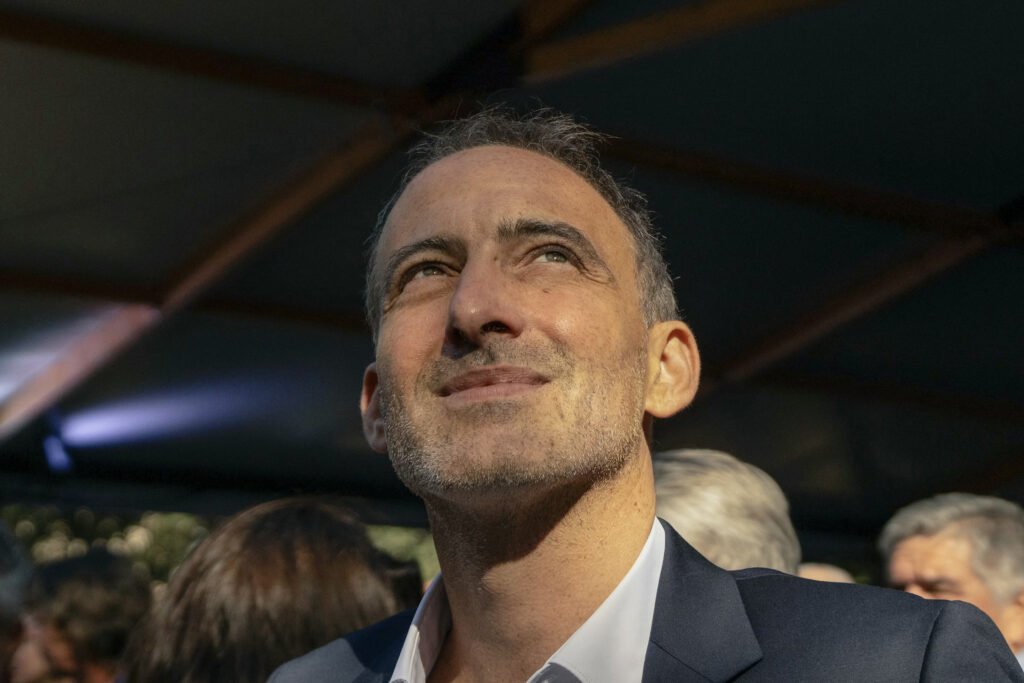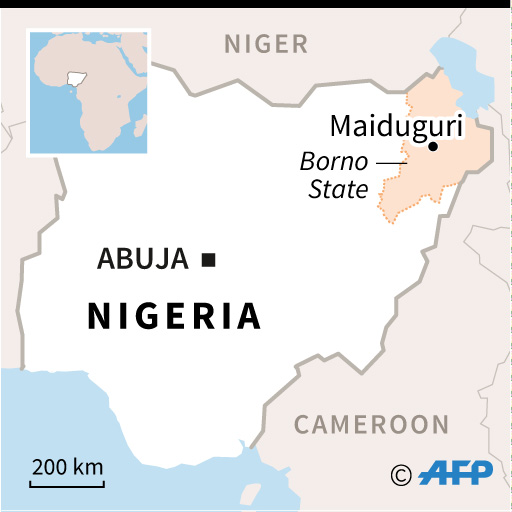Du “cocon” d’internet aux podiums, la streameuse Maghla s’impose en figure forte du web français
Aussi à l’aise devant un jeu vidéo que sur les podiums des défilés, la première streameuse de France s’est imposée comme une figure phare du web, revendiquant d’être une femme dans un univers masculin et dénonçant les violences sexistes sur internet.Maghla, qui tire son pseudo de son deuxième prénom, cumule plusieurs millions d’abonnés sur ses réseaux en réussissant un mélange des genres plutôt rare: divertissements autour de la mode, podcasts de confidences d’auditeurs ou jeux d’horreur.”Mon contenu est une extension de chacune des facettes de ma personnalité”, résume à l’AFP Barbara, son premier prénom, polo ample et tasse de thé dans les mains, quelques jours avant d’embarquer dans un bolide pour le GP Explorer 3, la course auto des stars du web.Mais c’est son amour pour les jeux vidéo qui l’a menée vers le streaming.”Mon père m’a transmis cette passion”, se souvient Maghla, 31 ans, qui se décrit comme une enfant bonne élève et introvertie. En parallèle d’une licence en économie-gestion, elle se lance en 2017 sur Twitch, plateforme de diffusion vidéo en direct alors encore peu connue du grand public.”C’était un endroit où je pouvais partager mes passions, et comme je suis très bavarde, c’était parfait”, s’amuse-t-elle, filmant ses parties dans son petit studio.- “Cocon” -“J’étais très timide, je ne trouvais pas ma place”, raconte-t-elle, avant de confier se sentir sur internet comme dans un cocon.Suivie aujourd’hui par plus de 1,1 million de personnes sur Twitch, elle est la première streameuse de France. Mais si on compte les streameurs hommes, elle n’est que dans le top 30.Ses débuts sont marqués par de multiples remarques sexistes et du harcèlement.”Je me prenais des insultes parce que j’avais du rouge à lèvres, parce qu’on voyait un petit peu trop mes bras, mon décolleté”, se souvient-elle. Elle décide alors de “s’habiller large”, “moins se maquiller”.Elle raconte aussi “des montages où vous êtes nue dans des scènes pornographiques” partagés en ligne, “de la semence sur des photos qu’on vous envoie”.Elle finit par déposer plainte et, en 2022, l’un de ses harceleurs est condamné à un an de prison.- Incessante sexualisation -Quelques mois plus tard, elle prend la parole sur les réseaux sociaux pour dénoncer l’incessante sexualisation dont elle est l’objet. Ce qui entraîne une vague de témoignages d’autres streameuses.”On le vivait toutes en silence. Je pense qu’aujourd’hui, on doit en reparler”, affirme Maghla.C’est aussi à cette période qu’elle diminue sa présence sur Twitch pour se lancer sur Youtube: “j’avais besoin d’une plateforme où je ne suis pas obligée de lire les commentaires, où j’ai une distance”.Entourée d’une équipe d’une dizaine de personnes, elle alterne entre des podcasts filmés et des projets plus ambitieux aux allures de jeux télé. Pour les financer, elle s’associe à des marques, ce qui permet d’amortir jusqu’à “60-70% des coûts”, le reste étant complété par les revenus publicitaires de YouTube.Maghla apparaît aussi dans certaines des plus grosses productions de la plateforme, notamment celles du créateur de contenu Squeezie (20 millions d’abonnés), avec qui elle partage la même agence artistique, Bump.- Occuper l’espace -“C’est important, en tant que femme, de montrer qu’on est là”, on doit “avoir une sororité. C’est super important”, souligne-t-elle, insistant sur l’importance de la parité dans les contenus alors que de nombreux influenceurs masculins sont régulièrement critiqués pour ne pas suffisamment inviter de créatrices.Récemment, elle a déposé deux nouvelles plaintes contre des harceleurs, pour l’instant sans suite.Elle se dit néanmoins optimiste: “c’est mieux qu’il y a huit ans, mais il y a encore du chemin. Il faut avoir les épaules solides”.Invitée deux fois à défiler pour L’Oréal, elle a aussi mis un pied hors d’internet en apparaissant dans la série Bref 2, et rêve désormais de cinéma. “Je n’ai jamais été autant moi qu’aujourd’hui”, affirme Barbara, qui, ado, “aurait aimé avoir une Maghla”.”Je suis sur internet la grande sœur que j’aurais voulu avoir”.
Raphaël Glucksmann, le vent dans le dos, mais sans convaincre le reste de la gauche
Raphaël Glucksmann, positionné sur une stratégie de rupture avec La France insoumise, a le vent en poupe pour 2027 selon les sondages, mais le leader de Place publique doit encore s’imposer dans le débat politique national et convaincre le reste de la gauche.Alors que se tiennent samedi et dimanche à La Réole (Gironde) les Rencontres de Place Publique, l’eurodéputé est auréolé d’un sondage Ifop qui le place en situation de concurrencer Édouard Philippe et lui laisse entrevoir une qualification au second tour de la présidentielle.Un sondage critiqué par la gauche sur sa méthode, mais qui conforte Raphaël Glucksmann dans sa “stratégie de rupture claire” avec La France insoumise, même s’il se refuse encore à officialiser sa volonté de concourir à l’élection.Le patron du Parti socialiste Olivier Faure, qui se verrait bien lui aussi sur la ligne de départ, n’en fait pourtant pas le prétendant naturel de la gauche: Raphaël Glucksmann “n’est pas le candidat des socialistes”, ni celui “du reste de gauche”, a-t-il asséné jeudi en marge de la manifestation parisienne.Et pour cause, Raphaël Glucksmann refuse de participer au processus d’union pour 2027 – initié notamment par les Écologistes et le PS -, qui devrait passer par une primaire.Il argumente que les Écologistes ont aussi invité LFI, alors que l’eurodéputé de 45 ans défend une ligne social-démocrate émancipée de la gauche radicale, dont il critique notamment les positions sur l’Ukraine, la Russie, la Chine, et le rapport à la démocratie. “Si on fait une primaire avec Jean-Luc Mélenchon, ça veut dire qu’on imagine que s’il gagne on va se battre derrière lui. Dans ce moment de l’histoire, je dis non”, a-t-il expliqué le weekend dernier à la patronne des Écologistes Marine Tondelier, qui sera présente à La Réole.Cette dernière rétorque que les insoumis ont déjà clairement rejeté toute primaire, et qu’en installant le duel avec Jean-Luc Mélenchon, Raphaël Glucksmann risque de faire gagner le RN. L’eurodéputé se veut pourtant en première ligne dans le combat contre l’extrême droite.Mais il plaide pour la “clarté” politique, et pour qu’il y ait deux offres politiques à gauche, puisqu’elles sont selon lui “irréconciliables”. “François Mitterrand, quand il a gagné en 1981, ce n’était pas sur la base d’une union avec les communistes, mais d’un rapport de force”, rappelle l’essayiste qui veut s’imposer dans les sondages pour incarner le vote utile.”Mon angoisse, ce n’est pas que la gauche soit désunie, c’est qu’elle plafonne à 25 %”, avance-t-il, espérant attirer un électorat plus centriste. “Raphaël est désormais une voix qui compte”, veut croire un de ses proches, soulignant qu'”il a été invité par le Premier ministre Lecornu”. “Personne ne l’a pris au sérieux quand il a dit qu’il voulait créer un parti de masse, mais on a 12.000 adhérents”, ajoute un député de Place publique.- Pas de leadership -Mais les critiques fusent à gauche. Les Insoumis, qui en ont fait leur premier opposant, le décrivent comme “un nouveau Macron”.Et si l’ex-ministre Aurélie Filippetti vient d’annoncer son ralliement à Place publique, socialistes et écologistes soulignent que l’eurodéputé ne dispose que de deux députés et deux sénateurs, et peine à s’imposer dans le débat.”Personne ne sait réellement ce qu’il pense sur de nombreux sujets nationaux”, remarque une élue écologiste, qui ne sent “pas une Glucksmann mania” autour d’elle.”Je ne vois pas comment il incarne la rupture avec le macronisme, c’est quand même la gauche caviar”, assène la même, réitérant le procès en parisianisme qui poursuit le fils du philosophe André Glucksmann.Le compagnon de la journaliste Léa Salamé a tout de même les faveurs de certains socialistes pour 2027, même si d’autres remarquent qu’il n’a pas “une position centrale” à gauche pour rassembler.Une macroniste avoue ne pas croire “une seule seconde qu’il sera candidat”. Elle rappelle qu’au soir de la dissolution, alors qu’il était arrivé en tête des européennes, il n’avait “pas pris le leadership” à gauche, se laissant imposer l’accord du Nouveau Front populaire, avec LFI. “C’est un type sympa, brillant, un excellent porte-parole, mais profondément pas un homme politique, il en a fait la démonstration ce jour-là”.
South Africa’s Kolisi wary of Argentina ‘fight’ in Rugby Championship finaleFri, 03 Oct 2025 13:40:29 GMT
South Africa captain Siya Kolisi expects Argentina to show plenty of “fight” at Twickenham on Saturday despite last week’s 67-30 mauling as the Springboks chase a second straight Rugby Championship crown.Kolisi’s back-to-back world champions top the table by a single point heading into the sixth and final round of the southern hemisphere championship.A bonus-point victory …
Thousands of Nigerians flee to Cameroon after jihadist raidFri, 03 Oct 2025 13:40:11 GMT
Thousands of people in northeastern Nigeria have crossed into Cameroon following a raid by Boko Haram jihadists that left their town in ruins, local sources told AFP on Friday. While Nigeria’s conflict with Boko Haram and breakaway rival Islamic State West Africa Province (ISWAP) has ebbed since its peak a decade ago, this year has seen …
Thousands of Nigerians flee to Cameroon after jihadist raidFri, 03 Oct 2025 13:40:11 GMT Read More »
L’Indonésie suspend TikTok qui a refusé de fournir des données liées aux manifestations
Le gouvernement indonésien a suspendu la licence d’exploitation de l’application de partage de vidéos TikTok après que la plateforme a refusé de communiquer certaines données relatives aux récentes manifestations anti-gouvernementales, a annoncé vendredi le ministère de la communication et des affaires numériques.L’Indonésie est le deuxième marché de TikTok, propriété du groupe chinois ByteDance, avec plus de 100 millions d’utilisateurs.Le ministère a déclaré dans un communiqué avoir “temporairement suspendu” la licence d’exploitation de l’application en Indonésie pour ne pas avoir fourni des données correspondant aux activités de sa fonctionnalité de direct lors des manifestations anti-gouvernementales qui se sont déroulées au mois d’août.Visant initialement à dénoncer les inégalités économiques, ces manifestations avaient pris un tour violent à la suite de la mort d’un moto-taxi écrasé par la police. Selon des ONG, ces violences ont fait dix morts.”Cette mesure est une forme de fermeté de la part du gouvernement, TikTok n’ayant fourni que des données partielles,” a expliqué Alexander Sabar, directeur général de la supervision de l’espace numérique, dans le communiqué. Le gouvernement a demandé à TikTok des données de trafic et d’autres informations liées à “la monétisation présumée” d’activités de direct de la part de comptes soupçonnés de pratiquer des paris en ligne. Le ministère a indiqué que TikTok avait jusqu’au 23 septembre pour fournir ces données, mais ne l’avait pas fait. De son côté, TikTok a déclaré se conformer à la législation des marchés où il est présent. Dans un communiqué, un porte-parole de la plateforme a précisé que TikTok travaillait en étroite collaboration avec le ministère indonésien “tout en restant attaché à protéger la confidentialité des utilisateurs et à garantir que [la] plateforme offre une expérience sûre et responsable à la communauté en Indonésie”.La fonctionnalité de direct de la plateforme était toujours disponible vendredi. L’activité de TikTok en Indonésie a déjà été confrontée à des difficultés. L’application avait ainsi temporairement suspendu sa fonctionnalité de direct en août en raison des violences lors des manifestations.Lundi, l’agence indonésienne de lutte contre les monopoles a infligé à TikTok une amende de 900.000 dollars pour ne pas avoir informé les régulateurs à temps de son acquisition de la plateforme de commerce électronique indonésienne Tokopedia. Sa fonctionnalité de vente en ligne avait également été suspendue par le gouvernement en 2023 après des initiatives visant à aider les petites entreprises.





